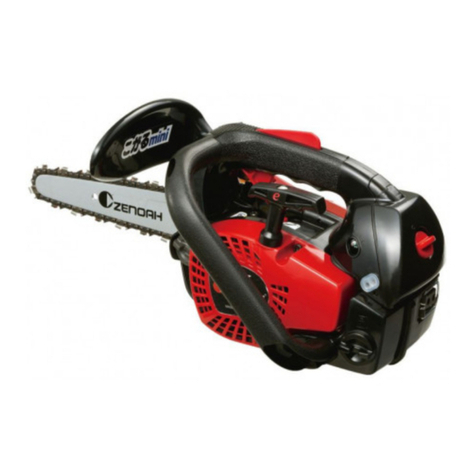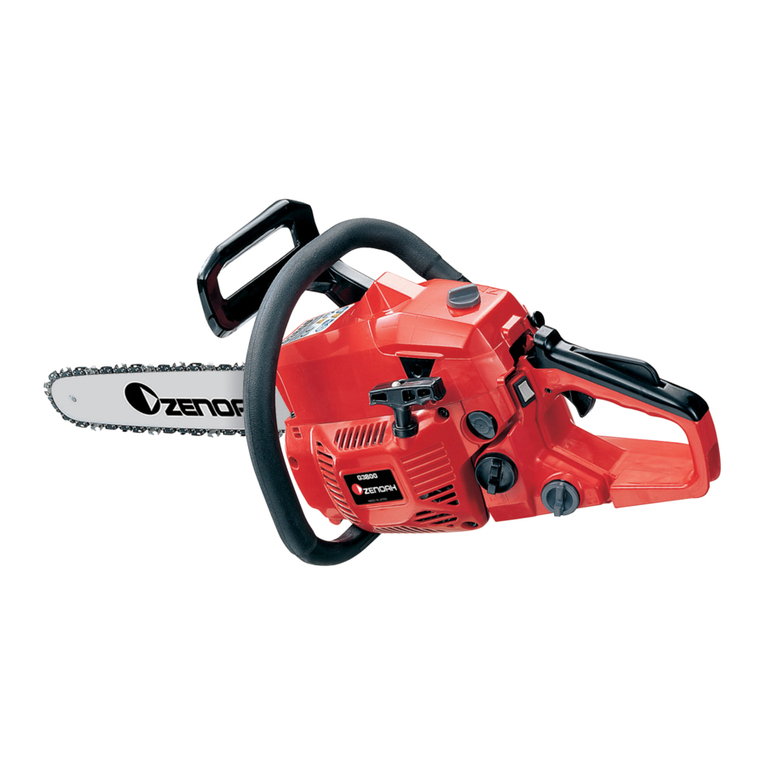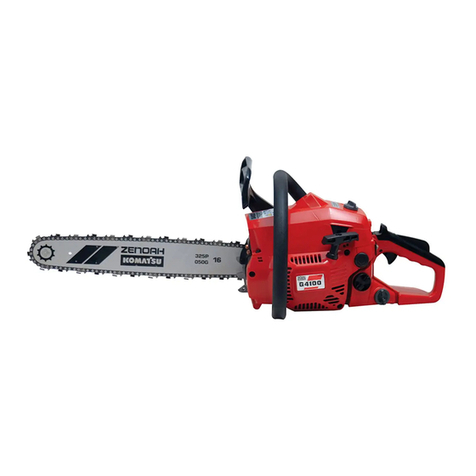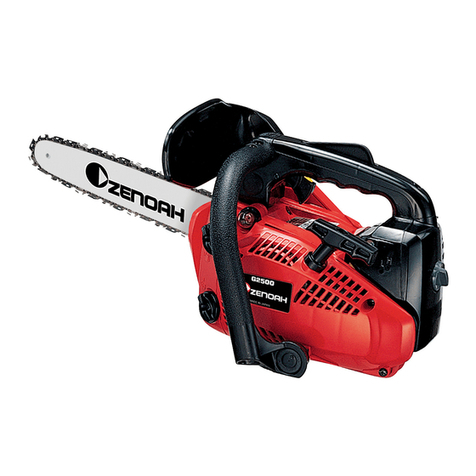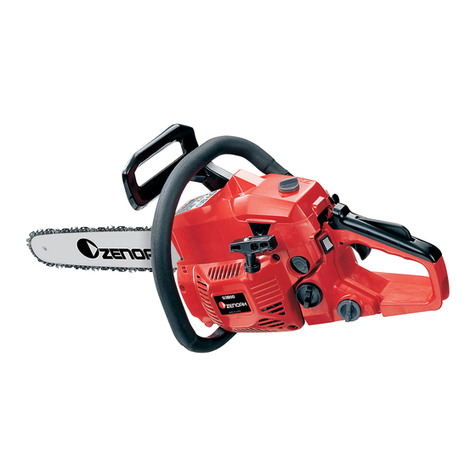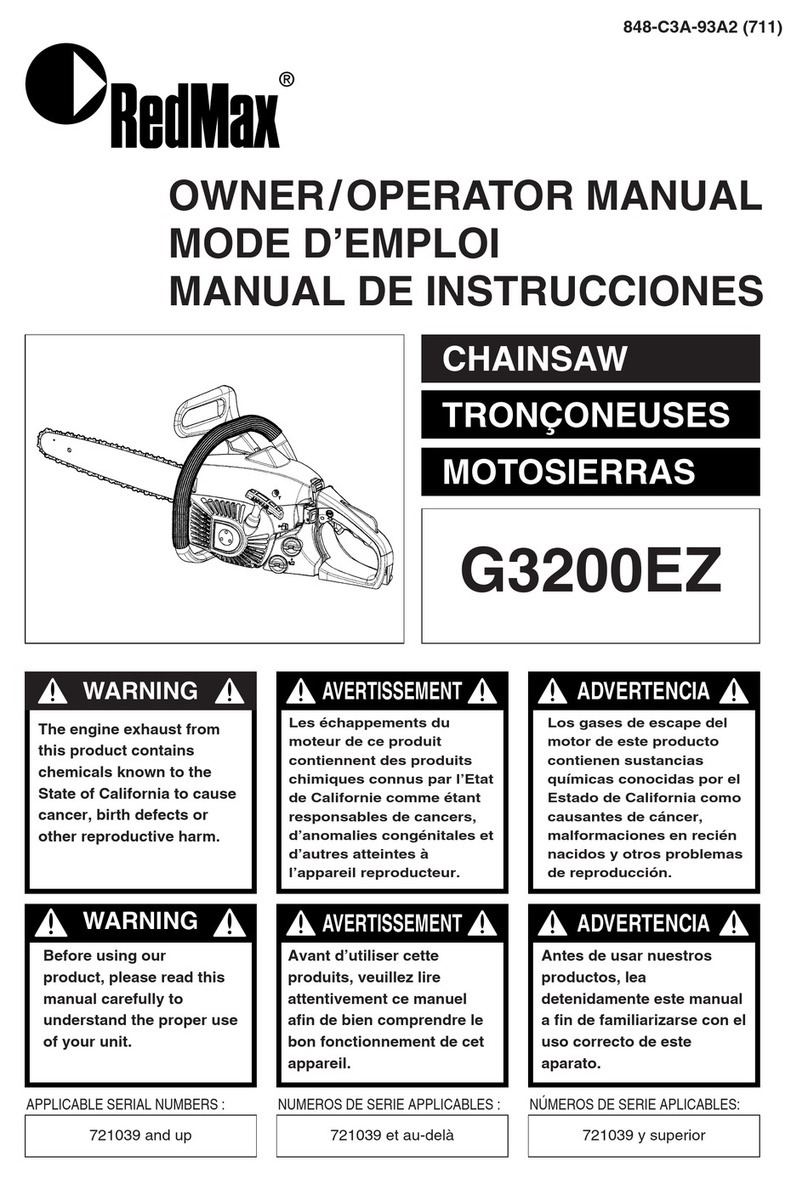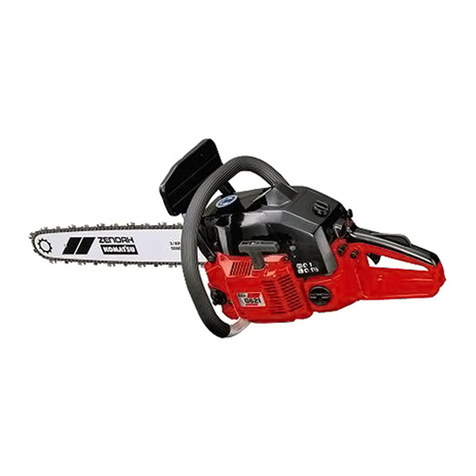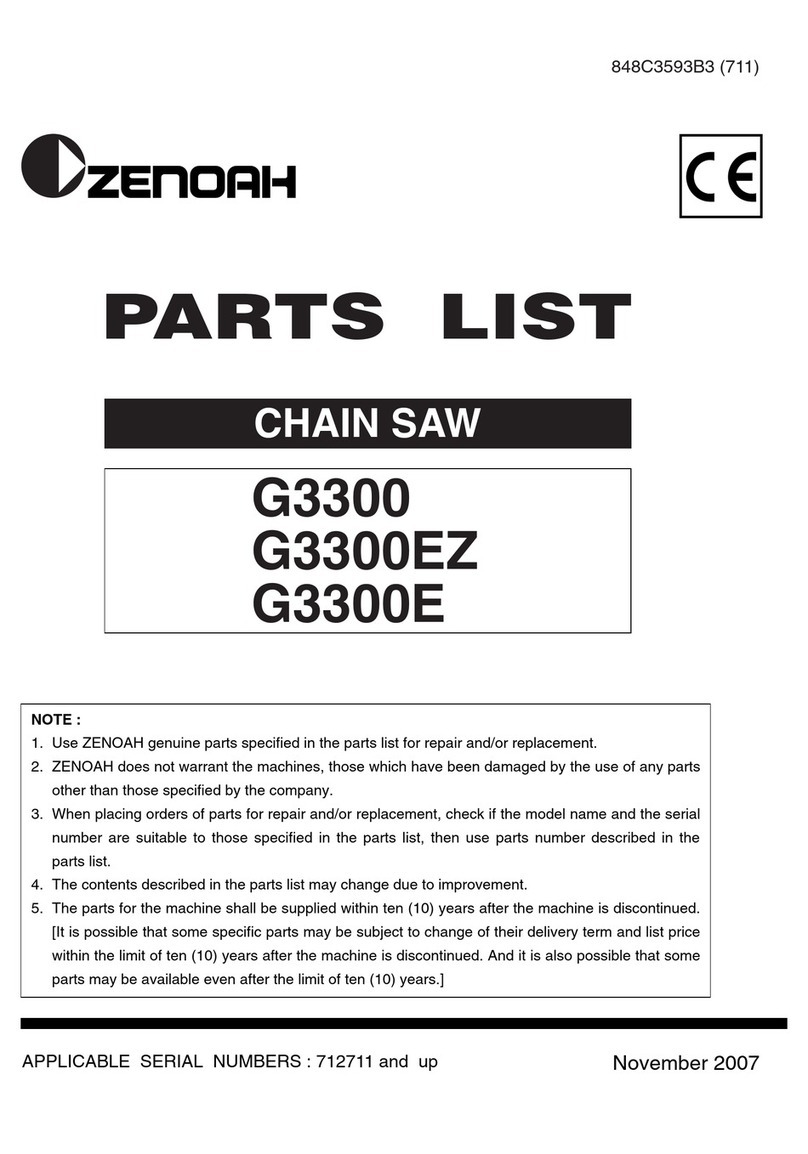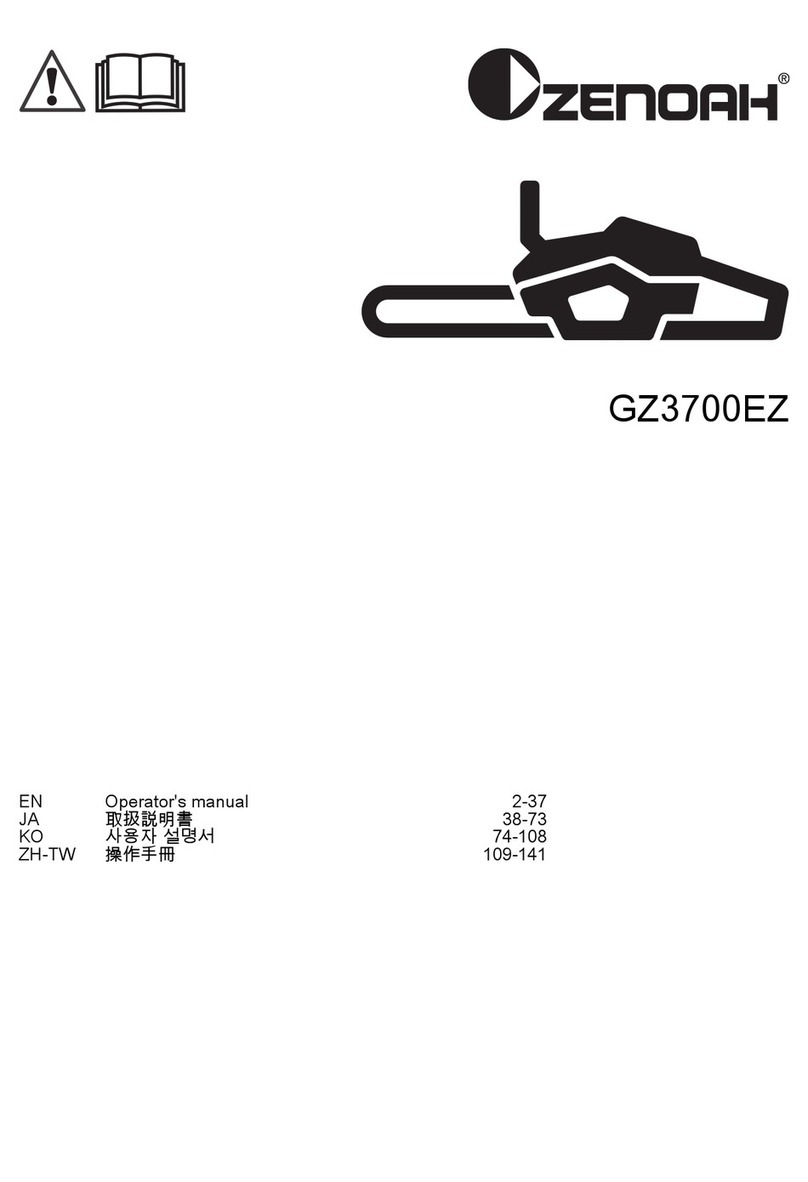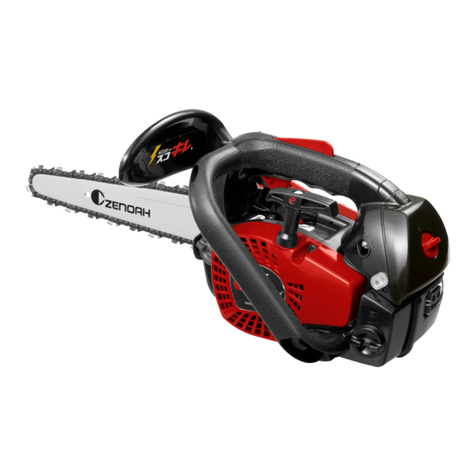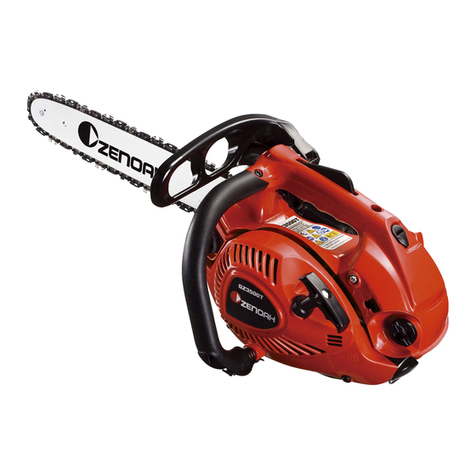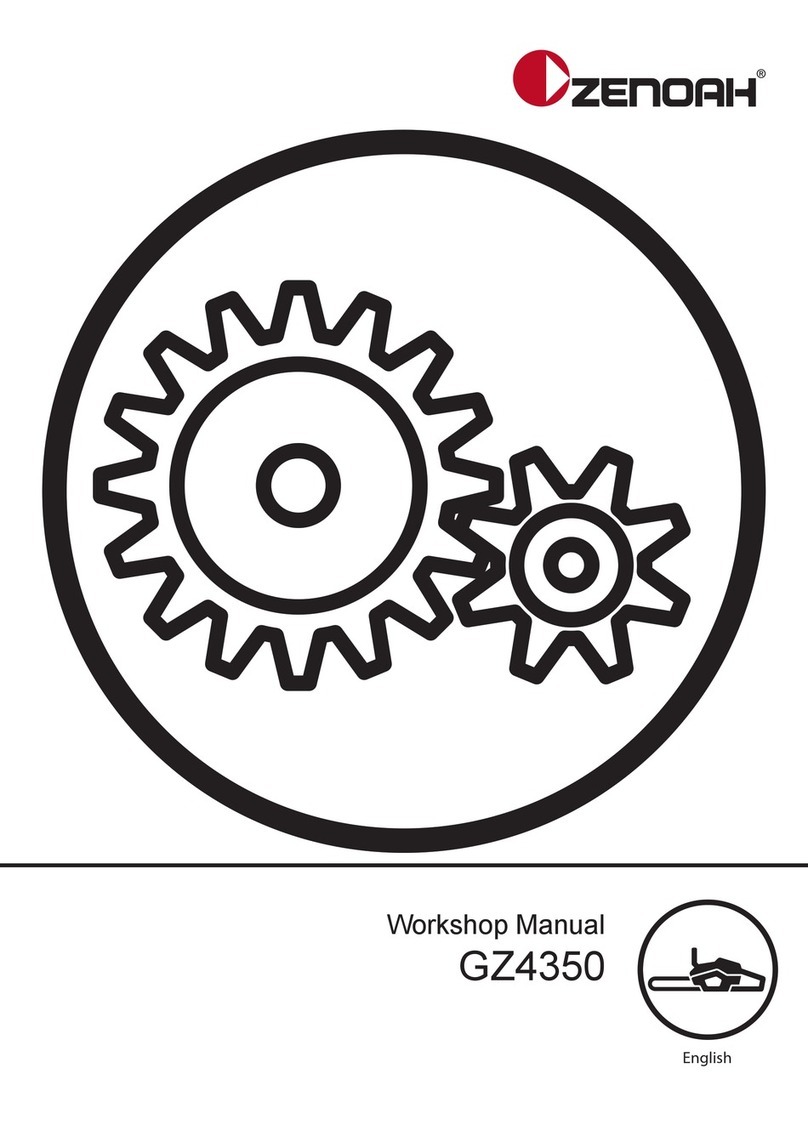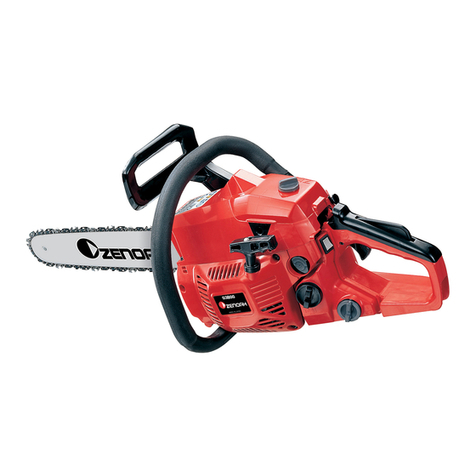
Safety
Safety definitions
Warnings, cautions and notes are used to point out
specially important parts of the manual.
WARNING: Used if there is a risk of injury or
death for the operator or bystanders if the
instructions in the manual are not obeyed.
CAUTION: Used if there is a risk of damage
to the product, other materials or the
adjacent area if the instructions in the
manual are not obeyed.
Note: Used to give more information that is necessary in
a given situation.
General safety instructions
WARNING: Read the warning instructions
that follow before you use the product.
• A chainsaw is a dangerous tool if used carelessly or
incorrectly and can cause serious injury or death. It
is very important that you read and understand the
contents of this operator’s manual.
• Under no circumstances may the design of the
product be modified without the permission of the
manufacturer. Do not use a product that appears to
have been modified by others and only use
accessories recommended for this product. Non-
authorized modifications and/or accessories can
result in serious personal injury or the death of the
operator or others.
• The inside of the muffler contain chemicals that may
be carcinogenic. Avoid contact with these elements
in the event of a damaged muffler.
• Long term inhalation of the engine’s exhaust fumes,
chain oil mist and sawdust can represent a health
risk.
• This product produces an electromagnetic field
during operation. This field may under some
circumstances interfere with active or passive
medical implants. To reduce the risk of serious or
fatal injury, we recommend persons with medical
implants to consult their physician and the medical
implant manufacturer before operating this product.
• The information in this operator's manual is never a
substitute for professional skills and experience. If
you get into a situation where you feel unsafe, stop
and seek expert advice. Contact your servicing
dealer or an experienced chainsaw user. Do not
attempt any task that you feel unsure of!
Safety instructions for operation
WARNING: Read the warning instructions
that follow before you use the product.
• Before using the product you must understand the
effects of kickback and how to avoid them. Refer to
Kickback information on page 11
for instructions.
• Never use a product that is faulty.
• Never use a product with visible damage to the
spark plug cap and ignition cable. A risk of sparking
arises, which can cause a fire.
• Never use the product if you are fatigued, while
under the influence of alcohol or drugs, medication
or anything that could affect your vision, alertness,
coordination or judgement.
• Do not use the product in bad weather such as
dense fog, heavy rain, strong wind, intense cold,
etcetera. Working in bad weather is tiring and often
brings added risks, such as icy ground,
unpredictable felling direction, etcetera.
• Never start a product unless the guide bar, saw
chain and all covers are fitted correctly. Refer to
Assembly on page 9
for instructions. Without a bar
and saw chain attached to the product the clutch can
come loose and cause serious injury.
• Never start the product indoors. Exhaust fumes can
be dangerous if inhaled.
• The exhaust fumes from the engine are hot and can
contain sparks, which can start a fire. Never start the
product near flammable material!
• Observe your surroundings and make sure that there
is no risk of people or animals coming in contact with
or affect your control of the product.
• Never allow children to use or be in the vicinity of the
product. As the product is equipped with a spring-
loaded start/stop switch and can be started by low
speed and force on the starter handle, even small
children under some circumstances can produce the
force necessary to start the product. This can mean
a risk of serious personal injury. Therefore remove
the spark plug cap when the product is not under
close supervision.
• You must have a steady stance in order to have full
control of the product. Never work standing on a
4320 - 008 - 24.10.2018

